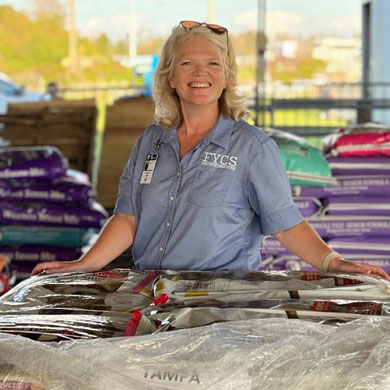Hurricane coming to Gainesville? Gators are pros at prepping
Here’s a not-so-unfamiliar scenario: the Florida storm season is in full effect and a hurricane warning is issued for Alachua County. Gainesville is in the storm’s direct path and more than 30,000 employees of the University of Florida are bracing for the tropical weather. What happens next? How do Gators prep the campus for potential impact? There’s much more to it than stocking up on batteries and bottled water.

While locals worry about their plants and patio furniture flying away during the storm, the staff at the Florida Museum of Natural History’s Butterfly Rainforest have a similar – but less common – problem. To prevent 700 butterflies from escaping due to potential building damage on the UF museum’s campus (the exotic creatures are considered invasive species, after all), a dozen staff members use large nets to swiftly round up the insects.

Up-to-the-minute, ultra-local weather reports, anyone? UF has its own media hub, with students delivering meteorological news as the storm unfolds. When a storm is imminent, a team of about 30 UF volunteers – including students, faculty, and staff – assemble to run WUFT (the UF College of Journalism and Communications’ TV, radio, and digital news channels, as well as the Spanish-language channel Noticias). Faculty and staff instruct the students, who serve as the faces on camera and the voices on the radio for news and meteorology.

Animals are in highly capable hands before, during, and after hurricane season at UF. The Veterinary Emergency Treatment Service disaster response team – made up of veterinarians, emergency responders, and students – helps animals after storms with emergency care, using triage, gas anesthesia, and basic surgery. The team assists animals that are stuck in sinkholes, mud, water, gorges, overturned trailers, and other difficult-to-reach places. To prepare for disasters, the team runs mock drills on campus that expose trainees to potential scenarios and test the existing procedures and protocols.

As power outages loom, trucks and portable generators are stationed in Citra, Florida at the UF/IFAS Plant Sciences Research and Education Unit. Once the storm passes, trained staff members are deployed with chainsaws and other equipment to restore power to whichever 17 UF/IFAS facilities are affected.

But who is watching the data? UF Information Technology is on it, committed to keeping everything running on campus. Three people are deployed to the university’s main data center, where HiPerGator (UF’s supercomputer) is located, to ride out the storm. Two people make sure all services stay online — like GatorMail and payroll for employees — and monitor emergency websites. The other person is there to maintain the building itself and try to prevent any massive outages.

Pre-storm cleanup is paramount, and the team at Facilities Services preps by emptying all trash from dumpsters, carts, trashcans, and recycling bins around campus. Items need to be secured in the Facility Services Recycling Yard to prevent them from blowing away. Motor Pool fills all fuel tanks in order to have a three-week supply for all state vehicles on campus. A 400-gallon mobile diesel fuel tank, which can be used to refuel campus emergency generators, is also filled.
How’s that for storm prep? It’s a major job and it’s not for the faint of heart. It takes a lot of grit to live and work in Florida during hurricane season but, year after year, Gators have it covered.
